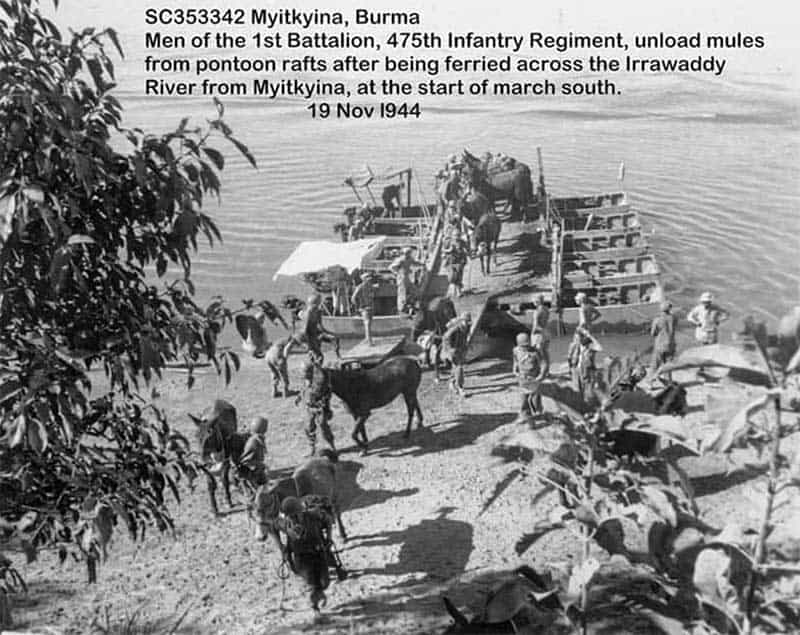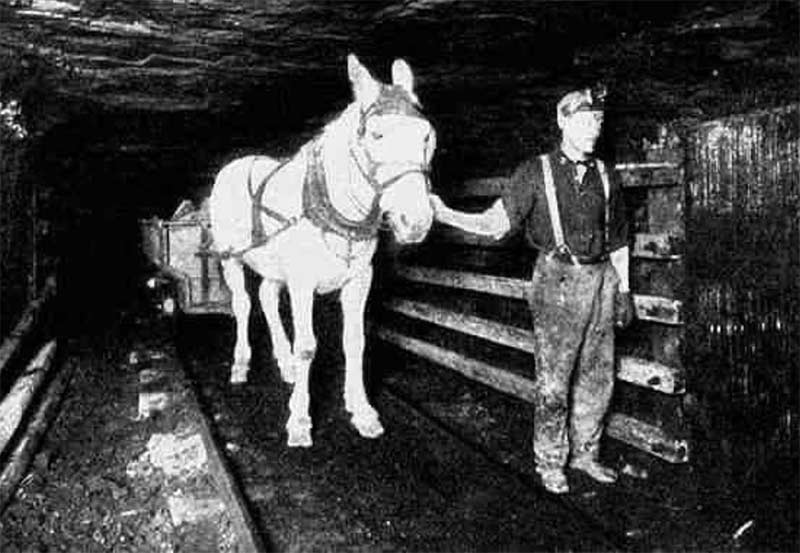For The Love of Mules
It was only a few years ago I learned about Merrill’s Marauder’s and mules, the famous unit who traversed Burma during WWII. Afterward, I wrote an article about them which led me to meeting a Kentucky gentleman by the name of Ted. His daddy had mules, and naturally, he did too. It was the beginning of a great friendship. The more I read and heard about mules, the more fascinated I became.
Ted told me stories of being lost in the fog in the national forest and letting the ol’ mule blindly lead him out. Sure, they can be stubborn, after all it’s where the saying came from, but most times it’s because they know they’re right and we may be a touched confused.
Nothing is more “sure footed” than a mule either. They have tremendous stamina, combined with a great work ethic. No wonder they’re used for carrying supplies through impenetrable mountains and other rough terrain. I’m going to share a story I recently read to keep it alive, as in my mind, it’s worthy of repeating.
Legend of the White Mule
In 1880, the Bodie mines were producing tons of ore, rich in gold and silver. Shaft depths reached between 400 to 600 feet deep, with two shafts reaching the 1,200-foot mark — the Standard and the Lent.
In total, the Bodie Mining District, located in in eastern Mono County, Calif., consisted of 32 mines, with 60 miles of tunnel work and over 2,000 men working the hard rock. The mule’s value was priceless in the mines with their impressive strength making it possible to pull heavy ore carts from the bowels of the mountain.
Cave Dwellers
Living in underground stalls, handlers fulfilled the mules needs by delivering and feeding prime hay to them. It was common to purchase young mules to be lowered into the narrow shafts where they were trained to pull ore carts. The mules quickly learned the routine, working diligently, without complaint.
Sadly, most mules never saw the light of day again, for as they grew, they were too large to fit into the hoisting cages. The miners respected their loyalty, and intelligence while caring for them, naturally becoming attached to them. They’d name the mules after friends, relatives or politicians. Due to the mules’ horrible fate, superstitious stories became popular, stating the mules’ spirits roamed the mines.
The Standard Mine was the most productive. When it reached the 500-foot depth, a mule was summoned to transport the ore cars. Two company men were sent to a stock ranch near Mono Lake to look for a potential contender. Paying the full price of $8.00, they picked a snow-white mule with sky blue eyes and straight teeth. On the road back to Bodie, they named him Jerry.
Like most mules, Jerry learned his job quickly. Carrots were his favorite reward. Jerry snored while waiting for his ore cart to be loaded and got hiccups when he drank water too fast. As time went on, his size tripled, as did his strength. This saddened the miners, as they knew the reality that Jerry would never leave the mine.
They built a comfortable stall where he enjoyed his off time. When it was decided Jerry was needed at the 600-foot level, an incline connection was built so Jerry could be used at both levels. They named the incline, “Mule Canyon.”
Fateful Fire
It was toward the end of the day shift, when a carbide lamp was knocked over, igniting a dry wood beam on the 600-foot level. The fire pushed up heavy smoke, squeezing out fresh air through the narrow tunnels. The screams could be heard from below and the men at the 400-foot level gave the signal that there was fire in the mine. Jerry was released from the ore car to fend for himself. Like ants, the men toppled over one another to reach the hoist that would bring them to the surface. On that dreadful day, no man perished.
When the danger was over, the company sent a volunteer crew below to assess the damage. Many of the volunteers were miners that worked with Jerry. The mood was solemn as they probed thru the burnt timbers. Although the damage was not as bad as they anticipated, they held little hope that Jerry could have survived. They found him lying in his stall. The heavy smoke had been too much, Jerry did not survive. Special permission was granted for Jerry to be buried in a marked grave at the bottom of Mule Canyon.
A few months later, an unknown miner who was working at the 575-foot level, claimed to have seen the ghost of a white mule. The ghost was blocking his way into the new tunnel. The man escaped without injury but was emotionally shook up. The men who knew Jerry began to wonder if there was any truth to the miner’s story. They didn’t have much time to question him because the next day he was killed when he fell to his death down an unmarked hole inside the new tunnel. News spread quickly that the ghost of the white mule tried to warn the miner of the danger that lay in the dark.
From that day on, the legend of the white mule lingered in and out of the mines of Bodie. It was believed that Jerry was watching out for the men who worked underground. Miners were a superstitious bunch, and if anyone reported seeing a white mule, they listened closely to the details. Most men quit right then and there, not wanting to risk their lives any further.
Epilogue
I’ve never owned a mule, but I think about them often. The men I know who have owned them said there’s nothing like them. Sure footed, stubborn, faithful and loyal are words used to describe them. All in all, that isn’t such a bad way to be remembered. Mules were an important part of our heritage and history, especially for venturing out west. Do yourself a favor and investigate the contributions these animals have made to the development of our country. You’d be surprised!






